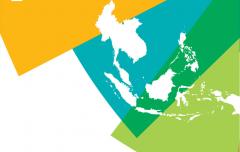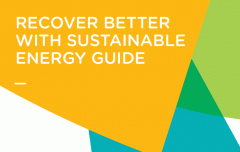Southeast Asia can use a COVID-19 recovery to become global sustainable energy hub
As the world continues to deal with the ongoing impacts of the COVID-19 pandemic, a new guide from Sustainable Energy for All (SEforALL) shows that Southeast Asian countries can jumpstart their economic recovery and advance the region’s clean energy transition by increasing investment in clean energy.
According to the Recover Better with Sustainable Energy Guide for Southeast Asian Nations that was released today by SEforALL, Southeast Asia has the opportunity to become a global sustainable energy hub and build on strong progress in closing remaining energy access gaps, improving energy efficiency and increasing deployment of renewable energy.
However, the guide also highlights the potential impact of the pandemic to stall or even reverse strong regional sustainable energy progress and why countries should prioritize investing in sustainable energy as part of their recovery plans in order to create jobs, drive economic growth and increase resilience. This investment will also support achieving Sustainable Development Goal 7 (SDG7) - access to affordable, reliable, sustainable and modern energy for all by 2030.
While Southeast Asia has done well in closing electricity access gaps, significant efforts are still needed to connect remote populations and to close clean cooking access gaps. The clean cooking challenge remains an elusive issue for the region, with 218 million people still without access today.
This investment also makes economic sense for countries. By acting on the enabling measures put forward in the Recover Better guide, they can benefit from increased GDP. If countries in Southeast Asia invest USD 27 billion annually to achieve the Association of Southeast Asian Nations (ASEAN) Renewable Energy target of 23 percent by 2025, it is estimated it will create an added annual GDP of USD 25 billion. Increasing investments can further enhance and strengthen regionalization of upstream and downstream manufacturing value chains in the region and elevate the region’s status in the global transition.
An ambitious Recover Better strategy will also help create new jobs. It is estimated that, if achieved, the current renewable energy policies and targets in Southeast Asia can generate 1.7 million jobs by 2030. Globally, for every USD 10 million invested in renewable energy and energy efficiency, it is estimated 2 to 2.5 times more jobs are created than investing the same amount into the fossil fuel industry.
“COVID-19 has changed the world as we know it. The booming economic growth story of Southeast Asia has been put on hold by the ongoing pandemic. To reignite growth, countries should seize this unique, once in a generation opportunity to ‘Recover Better’ by investing in sustainable energy for all as they rebuild their economies from the impact of the pandemic”, said Damilola Ogunbiyi, CEO and Special Representative of the UN Secretary-General for Sustainable Energy for All and Co-Chair of UN-Energy.
“Clean energy access will unleash a range of economic, employment, commercial, health, and gender benefits to Southeast Asian countries and their citizens.”
Speaking on the role of Southeast Asia in the global energy transition, the ASEAN Centre for Energy (ACE) said, “ASEAN has tripled the renewables installed capacity since 2005, and it will keep increasing due to the tremendous potential, policy support and the rising investment.”
Launched during Singapore International Energy Week, the guide offers countries a set of enabling policy measures to adopt in their pandemic recovery and to channel stimulus packages towards.
For Southeast Asia, this includes:
- Energy efficiency: Southeast Asia has vast untapped energy efficiency investment potential of USD 400 billion yet to be realized, with only a few countries making positive progress. Energy efficiency remains one of the quickest and cheapest ways for governments to help reinvigorate manufacturing and commerce as well as accelerate an economic recovery. Progress on efficiency will also support global climate goals.
- Enhancing policy and regulatory frameworks: Countries should develop frameworks for both off-grid and on-grid renewable energy development, as well as support for enhanced regional energy cooperation and integration. The ASEAN cooperation framework is a well-established platform than can be further strengthened and supported to promote sustainable energy in the region.
- Invest in people: A Recover Better strategy should be underpinned with an investment into human capital and the skills to meet the booming job potential in sustainable energy.
If enacted, these enabling measures will help lead to cheaper energy provision, a better environment, and improved agriculture, gender and health outcomes. This reset can also spark progress at the speed and scale needed to meet SDG7 and help put the global economy on a trajectory in line with the Paris Agreement and Sustainable Development Goals. Read the guide in full here.
SEforALL has developed the Recover Better series to support countries as they continue to develop their post COVID-19 recovery plans and stimulus packages. The guide is part of a series that includes guides for countries in Africa and the Caribbean.
Photo credit: Asian Development Bank




